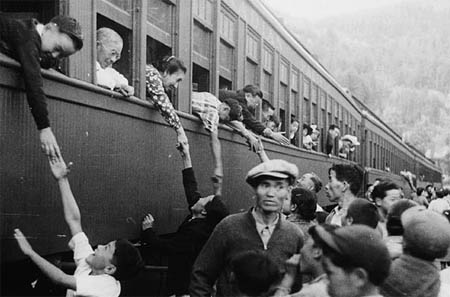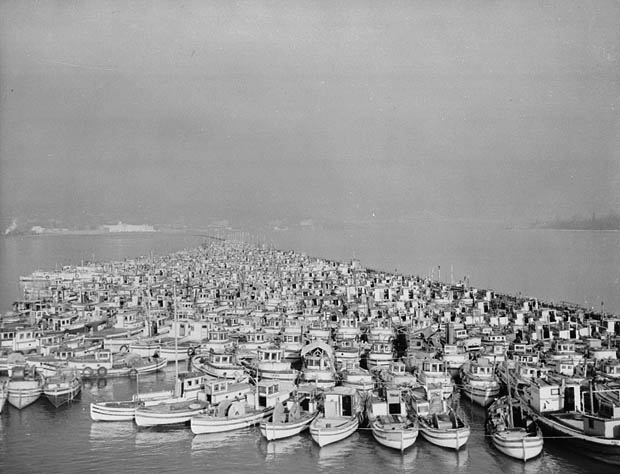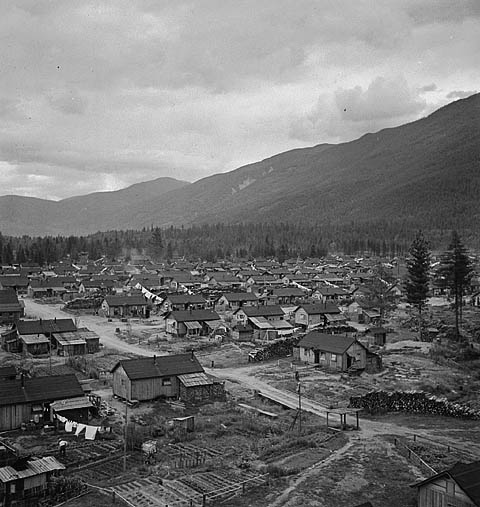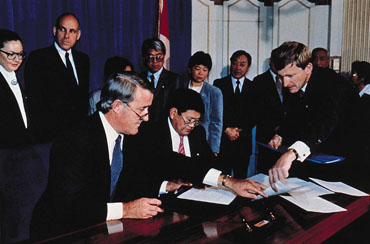Beginning in early 1942, the Canadian government detained and dispossessed more than 90 per cent of Japanese Canadians, some 21,000 people, living in British Columbia. They were detained under the War Measures Act and were interned for the rest of the Second World War. Their homes and businesses were sold by the government to pay for their detention. In 1988, Prime Minister Brian Mulroney apologized on behalf of the Canadian government for the wrongs it committed against Japanese Canadians. The government also made symbolic redress payments and repealed the War Measures Act.

Background
By the start of the Second World War, Japanese people had long suffered the sting of racism in Canada. Ever since the first Japanese person, a man named Manzo Nagano, stepped ashore in New Westminster in 1877, White settlers in British Columbia tried to exclude people whom they considered to be “undesirables.” They passed laws to keep Japanese people from working in the mines; to prevent them from voting; and to prohibit them from working on any project funded by the province.
Then came the news, on 7 December 1941, of Japan’s attacks on Pearl Harbor and Hong Kong, where Canadian troops were stationed. (See Canada and the Battle of Hong Kong.) With these shocking events, fears of a Japanese invasion were sparked. Their flames were fanned by a sensationalist press. Distrust of Japanese Canadians spread along the Pacific Coast. The RCMP moved quickly to arrest suspected Japanese operatives. The Royal Canadian Navy impounded 1,200 Japanese-owned fishing boats. On the recommendation of the RCMP, Japanese newspapers and schools were voluntarily shut down to avoid racist backlash.

“From the army point of view, I cannot see that Japanese Canadians constitute the slightest menace to national security,” wrote Major-General Kenneth Stuart. Nevertheless,
BC politicians were in a rage. They spoke of the Japanese “in the way that the Nazis would have spoken about Jewish Germans,” said Escott Reid, a Canadian diplomat.
“When they spoke I felt… the physical presence of evil.”
Detained, Dispossessed and Dispersed
On 24 February 1942, the federal Cabinet of Prime Minister William Lyon Mackenzie King issued Order-in-Council P.C. 1486 to remove and detain “any and all persons” from any “protective area” in the country. Those powers were broad enough to apply to anyone. But they were specifically used to target Japanese Canadians along the West Coast. The following week, the British Columbia Security Commission was established. It implemented and carried out Japanese internment.
On 16 March, the first Japanese Canadians were taken from areas 160 km inland from the Pacific coast — deemed a “protected area” — and brought to Hastings Park in Vancouver. (See Japanese Canadians Held at Hastings Park.) More than 8,000 detainees were processed through Hastings Park. Women and children were housed in the Livestock Building. All property that could not be carried was taken into government custody.
“I was a 22-year-old Japanese Canadian,” said Tom Tamagi, “a prisoner of my own country of birth. We were confined inside the high wire fence of Hastings Park just like caged animals.”
Trains then carried the Japanese detainees to Slocan, New Denver, Kaslo,
Greenwood and Sandon — ghost towns in the Kootenays.
Others were offered the option of working on sugar beet farms in
Alberta and Manitoba (see
Sugar Industry), where they would be able to keep their families intact.
Though the camps were not surrounded with barbed wire fences, as they were in the United States, conditions were overcrowded and poor. There was no electricity or running water. Those who resisted their internment were sent to prisoner of war camps in Petawawa, Ontario; or to Camp 101 on the northern shore of Lake Superior.
In a further betrayal, an order-in-council signed 19 January 1943 liquidated all Japanese property that had been under the government’s “protective custody.” Homes, farms, businesses and personal property were sold. The proceeds were used to pay the costs of detaining Japanese Canadians.

Anti-Japanese Racism
Anti-Japanese racism was not confined to British Columbia. Though in need of labour, Albertans did not want Japanese Canadians in their midst. Alberta sugar beet farmers crowded Japanese labourers into tiny shacks, uninsulated granaries and chicken coops; they paid them a pittance for their hard labour.
More than 90 per cent of Japanese Canadians — some 21,000 people — were uprooted during the war. The majority were British subjects by birth. (Before 1947, both people born in Canada and naturalized immigrants were considered British subjects; in other words, they were citizens of the Commonwealth. Canadian citizenship came into effect in January 1947.)
Even after the war, Mackenzie King continued to bow to the most strident demands of the politicians and the citizens he represented. He offered Japanese Canadians two choices: move to Japan; or disperse to provinces east of the Rocky Mountains. He never expressed any regrets for the treatment of Japanese Canadians, during the war or after.

In 1946, nearly 4,000 former internees chose to leave Canada for bombed-out Japan. About 2,000 were aging first-generation immigrants — 1,300 were children under 16 years of age. The last controls on Japanese Canadians were not lifted until 1948, when
they were granted the right to vote. Finally, Canadian society began to open to the Japanese.
Apology and Redress
The military threat cited to justify the detention of Japanese Canadians never existed outside the anxious imaginations of some British Columbians. Not a single Japanese Canadian was charged with any wrongdoing. Still, some people have been uncomfortable judging the acts of our predecessors from the perspective of hindsight. When Japanese Canadians campaigned for compensation on 29 June 1984, Prime Minister Pierre Trudeau said, “I do not see how I can apologize for some historic event to which we… were not a party. We can regret that it happened.” He went on to ask where such claims for compensation would end. Indeed, other communities in Canada also sought redress and apology from the government for its racially motivated policies of the past: Ukrainian Canadians interned during the First World War; and Chinese Canadians who paid the head tax, among others.

But as expressed in the April 1947 issue of Saturday Night magazine, “It is the first step which costs; an injustice once performed is fatally easy to repeat.”
On 22 September 1988, Prime Minister Brian Mulroney rose in the
House of Commons to apologize on behalf of the Canadian government for the wrongs it committed against Japanese Canadians during wartime. The apology came with symbolic
redress payments to individuals and to community funds.
But the most enduring accomplishment of the Japanese campaign for redress was the abolition of the War Measures Act, which had provided the legal basis for the removal of the Japanese from their homes. Ultimately, the redress campaign was a strong reminder of the poisonous effects of racism in Canada.
See also Internment in Canada; Interned in Canada: An Interview with Pat Adachi; Hide Hyodo Shimizu; Obasan (novel); Joy Kogawa; David Suzuki; Masumi Mitsui; Racial Segregation of Asian Canadians.

 Share on Facebook
Share on Facebook Share on X
Share on X Share by Email
Share by Email Share on Google Classroom
Share on Google Classroom







